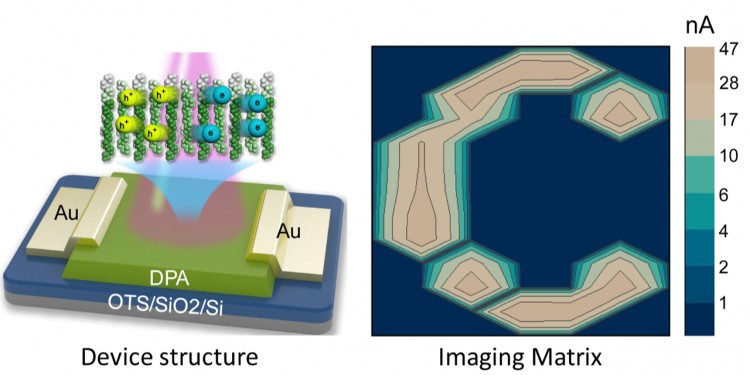
Nanophysicists developed a high-performance organic phototransistor
Converting light into electrical signals is essential for a number of future applications including imaging, optical communication and biomedical sensing. Researchers from the University of Münster have now developed a new molecular device enabling to detect light and translate it with high efficiency to detectable electronical current. Their work has been published in the latest issue of the journal "Nature Communications".
Phototransistors are important electronic building units enabling to capture light and convert it to electrical signal. For future applications such as foldable electronic devices, organic phototransistors (OPTs) attract a lot of attentions due to their attractive properties including flexibility, low cost, light weight, ease of large-area processing and precise molecular engineering. So far the development of OPTs has still lagged behind that of inorganic or hybrid materials, mainly because the low mobility of most organic photoresponsive materials limits the efficiency of transporting and collecting charge carriers.
Researchers from the Physical Institute and Center for Nanotechnology (CeNTech) in Münster headed by Prof. Dr. Harald Fuchs, have now developed together with collogues from China a novel thin-film OPT arrays. Their approach is based on a small-molecule - 2, 6-diphenylanthracene (DPA), which has a strong fluorescence anthracene as the semiconducting core and phenyl groups at 2 and 6 positions of anthracene to balance the mobility and optoelectronic properties. The fabricated small-molecule OPT device shows high photosensitivity, photoresponsivity and detectivity. "The reported values are all superior to state-of-the-art OPTs and among the best results of all previously reported phototransistors to date. At the same time, our DPA-based OPTs also show high stability in the air", says Dr. Deyang Li. Dr. Saeed Amirjalayer adds: "By combining our experimental data with atomistic simulation, we are, in addition, able to explain the high performance of our device, which is important for a rational development of these devices." The WWU researchers believe that, therefore, DPA offers great opportunity towards high-performance OPTs for both fundamental research and practical applications such as sensor technology or data transfer.
The work was funded by the German Research Foundation (SFB 858 und TRR 61).
Original publication:
Deyang Ji, Tao Li, Jie Liu, Saeed Amirjalayer, Mianzeng Zhong, Zhao-Yang Zhang, Xianhui Huang, Zhongming Wei, Huanli Dong, Wenping Hu and Harald Fuchs: Band-like transport in small-molecule thin films toward high mobility and ultrahigh detectivity phototransistor arrays. Nature Communications 10, Article number: 12 (2019)
